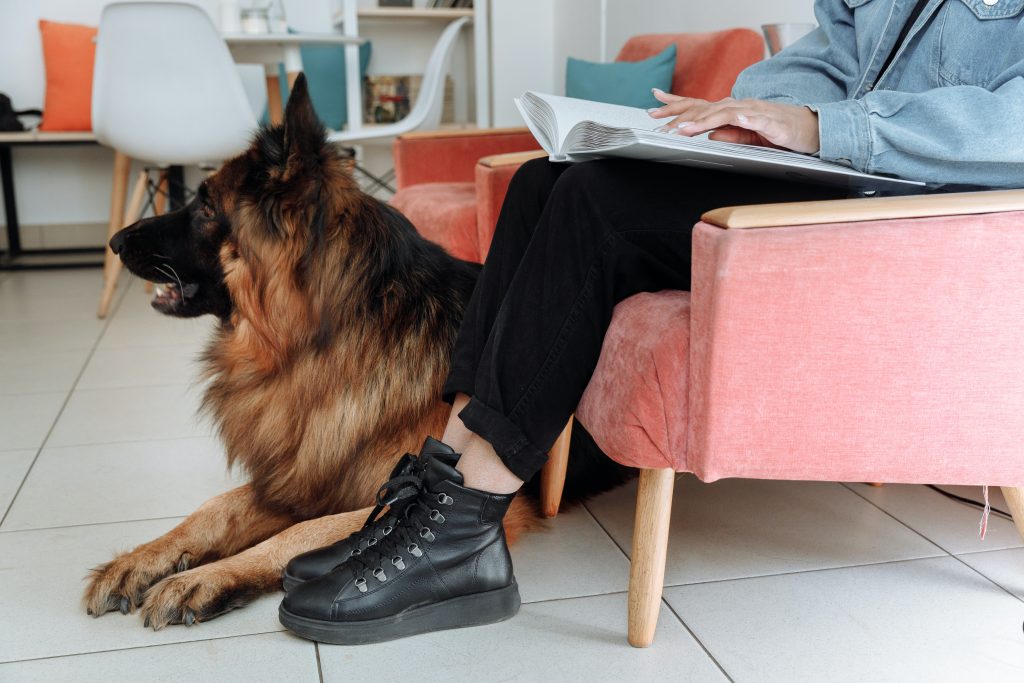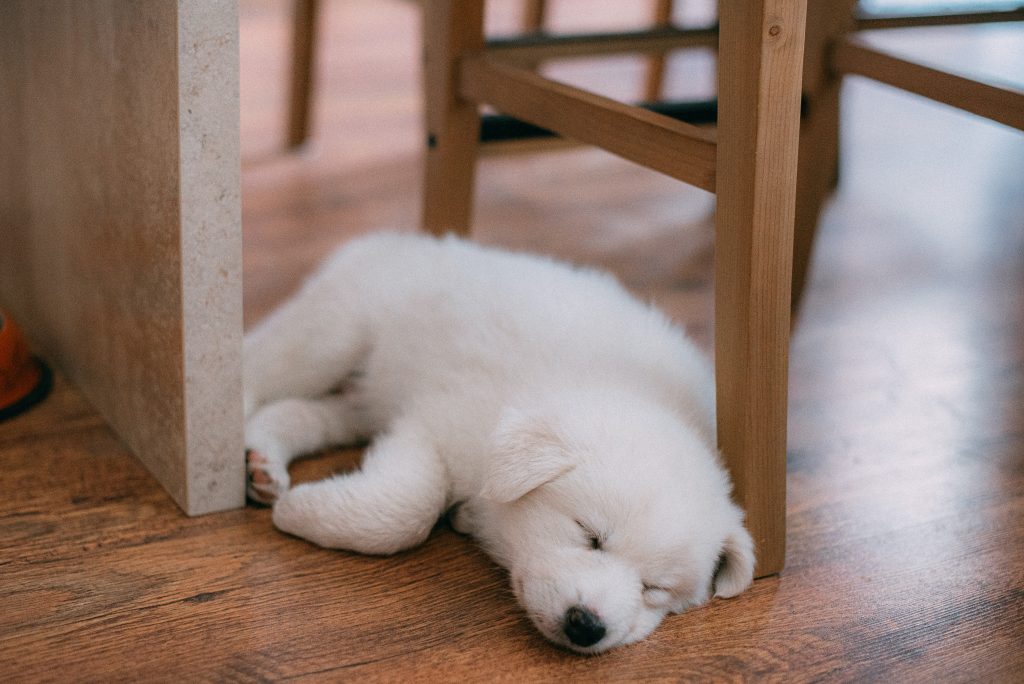As much as we adore our canine companions, there is one aspect of pet ownership that can be a constant struggle for many dog owners: shedding. Whether you find their hair clinging to your clothes, scattered across your furniture, or floating through the air like delicate wisps, the never-ending cycle of shedding can be a source of frustration and a never-ending battle to keep our homes clean.
However, there is hope! With a deeper understanding of why dogs shed and a proactive approach to grooming and care, it’s possible to minimize shedding and restore a sense of harmony to your living spaces. So stop vacuuming multiple times a day, and read these tips on how to reduce shedding in dogs.

Why Do Dogs Shed?
Dogs shed as part of their natural physiological process. Shedding is a normal and healthy occurrence that allows dogs to maintain their coat and regulate their body temperature. Understanding the reasons behind shedding can help you better manage and reduce excessive shedding in your furry friend.
- Seasonal Shedding: Many dogs, particularly those with a double coat, undergo seasonal shedding. This shedding is influenced by changes in daylight, temperature, and hormonal fluctuations. In the spring, dogs shed their thick winter undercoat to make way for a lighter, cooler summer coat. Conversely, in the fall, they shed their summer coat to prepare for a denser, insulating winter coat.
- Breed Characteristics: Different dog breeds have different coat types and shedding patterns. Breeds like Labrador Retrievers, German Shepherds, and Huskies have dense double coats, while breeds like Poodles and Bichon Frises have curly or wiry hair that tends to shed less. The breed’s coat type and density play a significant role in the amount of shedding you can expect.
- Hormonal Changes: Hormones, such as testosterone and estrogen, can affect the rate and intensity of shedding in dogs. Unspayed females may experience more significant shedding during estrus (heat) cycles, while intact males may have a more consistent level of shedding due to testosterone fluctuations. Spaying or neutering your dog can help regulate hormonal changes and reduce shedding.
- Overall Health: A dog’s overall health directly impacts their coat quality and shedding patterns. Nutritional deficiencies, allergies, skin infections, and underlying medical conditions can all contribute to excessive shedding. Ensuring your dog receives a balanced diet, regular veterinary check-ups, and proper dog grooming can help maintain a healthy coat and minimize shedding.
- Stress and Anxiety: Dogs are sensitive creatures, and stress or anxiety can trigger excessive shedding. Major life changes, such as moving to a new home, the introduction of a new family member or pet, or traumatic experiences, can lead to heightened shedding. Creating a calm and stable environment for your dog, providing plenty of exercise and mental stimulation, and using positive reinforcement techniques can help alleviate stress-related shedding.
Remember that while shedding is a normal process, excessive or sudden changes in shedding patterns could indicate an underlying health issue. If you notice dramatic hair loss, bald patches, inflamed skin, or other concerning symptoms, it is advisable to consult with a veterinarian for a proper diagnosis and treatment.
How to Manage Shedding
Reducing shedding in dogs requires a combination of proactive grooming practices, a healthy diet, and a conducive living environment. Here are some effective strategies to help you minimize shedding in your canine companion:
- Regular Brushing: Brushing your dog’s coat regularly is essential for reducing shedding. It helps remove loose and dead hair before it ends up on your furniture or clothes. Use a brush or comb specifically designed for your dog’s coat type. Long-haired dogs may require daily brushing, while shorter-haired breeds may benefit from brushing once or twice a week.
- Bathing and Moisturizing: Regular bathing with a gentle dog shampoo can help remove loose hair and keep your dog’s coat healthy. Avoid over-bathing, as it can strip the coat of natural oils, leading to dry skin and increased shedding. After bathing, consider using a dog conditioner or moisturizing spray to keep the coat hydrated.
- Healthy Diet: Proper nutrition plays a significant role in maintaining a healthy coat and minimizing shedding. Feed your dog a high-quality, balanced diet that includes essential fatty acids, such as omega-3 and omega-6, which promote a healthy coat. Consult with your veterinarian to determine the best diet for your dog’s specific needs.
- Supplements: In addition to a nutritious diet, certain supplements can support coat health and reduce shedding. Omega-3 fatty acid supplements, such as fish oil, can improve coat condition and decrease shedding. However, always consult with your vet before introducing any supplements to your dog’s diet.
- Grooming Tools: Use the right grooming tools to effectively manage shedding. For double-coated breeds, a slicker brush or undercoat rake can help remove loose undercoat hair. Shedding blades and grooming gloves can also be effective in capturing loose hair during brushing sessions.
- Regular Professional Grooming: Consider scheduling regular visits to a professional groomer who can perform thorough deshedding treatments. Groomers have specialized tools and techniques to remove excess hair and keep the coat in optimal condition.
- Control Fleas and Parasites: Fleas and other external parasites can cause itching and increased shedding. Use preventive measures to protect your dog from fleas, ticks, and other pests. Consult with your vet to determine the most appropriate parasite control method for your dog.
- Maintain a Clean Environment: Regularly vacuum your home and wash your dog’s bedding to remove loose hair from the environment. Using lint rollers or pet hair removers on furniture and clothing can also help manage shedding.
- Stress Reduction: Stress and anxiety can contribute to excessive shedding in dogs. Provide a calm and secure environment for your dog, ensure regular exercise and mental stimulation, and consider behavioral training or anxiety-reducing techniques if your dog is prone to stress.
Remember, while shedding can be managed, it cannot be completely eliminated. However, by implementing these strategies consistently, you can significantly reduce the amount of loose hair in your home and keep your dog’s coat healthy and shiny.

In conclusion, while shedding is a natural process for dogs, it doesn’t have to be an overwhelming challenge for dog owners. By understanding the reasons behind shedding and implementing proactive measures, you can effectively reduce shedding and create a more harmonious living environment. Regular brushing, appropriate grooming tools, a healthy diet, and a clean living space are key elements in minimizing excessive shedding. Remember, shedding cannot be completely eliminated, but with consistent care and attention, you can enjoy a cleaner home and a happier, healthier bond with your beloved furry friend. Embrace the shedding-reduction journey and revel in the joy of a more manageable and fur-friendly lifestyle.
Read more blog posts on our website here.



